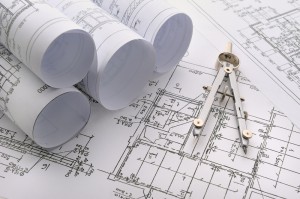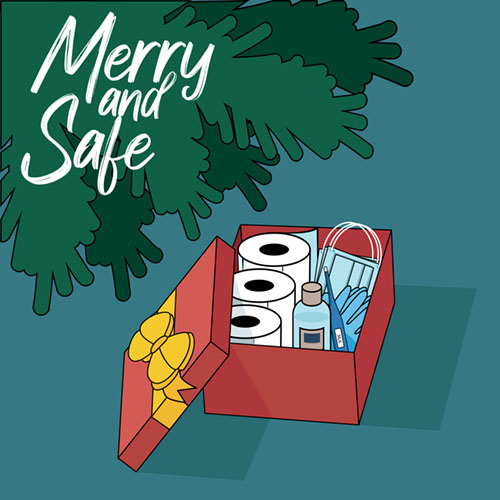2021 Interior Design Trends
 Happy New Year! Can you believe 2020 is finally behind us? In the spirit of getting a fresh start, now is the perfect time to update your home’s style for 2021. As you might expect, interior design trends are taking into account how much time we’ve spent in our homes over the last year. There’s definitely an emphasis on warmth and comfort as we head into a long winter. If you’re ready for a style refresh, then consider adopting one or more of these fun trends!
Happy New Year! Can you believe 2020 is finally behind us? In the spirit of getting a fresh start, now is the perfect time to update your home’s style for 2021. As you might expect, interior design trends are taking into account how much time we’ve spent in our homes over the last year. There’s definitely an emphasis on warmth and comfort as we head into a long winter. If you’re ready for a style refresh, then consider adopting one or more of these fun trends!
Sophisticated Cottagecore
Cottagecore was a huge design trend of 2020 that will continue into 2021. This really isn’t surprising, given that cottagecore emphasizes comfort and nostalgia. This type of design focuses on traditional and vintage elements, but moving forward we’ll also see touches of glamour. You could add sophistication with gold accessories that will really pop against the pastel palette of cottagecore.
Grandmillenial
Similar to cottagecore, the Grandmillenial style capitalizes on the comforts of yesterday. This design is all about what you might find in grandma’s house – perfect pillows like these pillows for sale, vintage couches, and lots of family heirlooms. What makes it different is its juxtaposition with modern touches like bold colors and velvet upholstery.
Global
As we all get tired of spending week after week at home, it also isn’t surprising that designs with a global touch will gain in popularity. If we can’t actually travel to distant lands, then at least we can get a taste of them at home. Earthy tones will be popular and décor will feature wood finishes and lots of rattan, using companies like Greenwich Interior Designer can give you that style. Also look for bold prints and tropical patterns.
Tranquil colors
We could all use a little more calm in our lives. And many of us will try to capture it by painting our walls in tranquil colors. Warm, earthy tones will be popular choices for interior design, as well as ocean hues. If we can’t be relaxing on the beach, then at least we can try to recreate the vibe at home, right?
Houseplants
Gardening became a wildly popular pastime in 2020. In 2021 it will move indoors as more of us embrace the idea of becoming plant parents. Instagram is full of incredible inspiration for houseplants, and it’s easier than ever score tropical and rare plants that can thrive in your indoor space. Plants help to create a fresh vibe, and many have been shown to also help clean the air of pollutants.
Multifunctional spaces
Make sure that you create your own space where you feel comfortable after a long day, check this outdoor corner lounge for sale, this will be a great asset for your home.
Working from home and going to school online have changed how we live in our spaces. Open concept floor plans have decreased in popularity as we all look for ways to have privacy on our video calls and meetings. In 2021, we’ll see more indoor living spaces that can be multifunctional. Think spare bedrooms that are now classrooms and playrooms, basements that can be renovated to home theaters or home gyms with custom gym design, and dining rooms that function as home offices in the day and restaurants at night, in which you can install a modern large wall clock, plants and some art.
Spa-like bathrooms
Finally, bathrooms will continue to embrace spa-like touches. They’ve become where we relax and unwind at the end of a long day, and we’ll see more luxury touches like spa tubs, gilded fixtures, and plush touches like heated towel bars.
If you are planning to build a house that is unique to you and your family and incorporate the latest trend in interior design, consult a custom home design professional.
Compliments of Virtual Results




 It seems unthinkable, but you won’t be able to see the Times Square ball drop in person this year. That doesn’t mean that you can’t have a rockin’ New Years Eve, though. In fact, there are so many great ideas circulating out there to welcome in 2021 that we thought we’d share them with you. These are our favorite ways we’ve found to ring in the New Year with style!
It seems unthinkable, but you won’t be able to see the Times Square ball drop in person this year. That doesn’t mean that you can’t have a rockin’ New Years Eve, though. In fact, there are so many great ideas circulating out there to welcome in 2021 that we thought we’d share them with you. These are our favorite ways we’ve found to ring in the New Year with style!
 Thanks to those visually stunning video tours, the HGTV Dream Homes have become top-of-mind for buyers looking for the latest and greatest in home design. Each year’s home showcases innovation in concept, layout, building materials and design.
Thanks to those visually stunning video tours, the HGTV Dream Homes have become top-of-mind for buyers looking for the latest and greatest in home design. Each year’s home showcases innovation in concept, layout, building materials and design.
 The real estate market continues to thrive despite the pandemic. Many Americans have recently taken advantage of historically low interest rates to purchase a new house, and others have decided to hire
The real estate market continues to thrive despite the pandemic. Many Americans have recently taken advantage of historically low interest rates to purchase a new house, and others have decided to hire 
 The pandemic has turned our working world upside down. More Americans than ever before are working remotely. And chances are, a good percentage of them will become permanent work-from-home positions. When you work from home, you can basically work from anywhere. As a result, vacations homes are in high demand. If you’re considering selling your vacation home, then this is what you need to know. If you wish to learn more about vacation homes and real estate, check out online sites like
The pandemic has turned our working world upside down. More Americans than ever before are working remotely. And chances are, a good percentage of them will become permanent work-from-home positions. When you work from home, you can basically work from anywhere. As a result, vacations homes are in high demand. If you’re considering selling your vacation home, then this is what you need to know. If you wish to learn more about vacation homes and real estate, check out online sites like  We know the holidays just aren’t going to be the same this year. But that doesn’t mean you can’t have a good time while staying home. In fact, with a little creativity, 2020 may be your most memorable holiday season yet! If you’re looking for ideas for a fun holiday staycation, then we’ve got you covered. We hope you and your loved ones have a healthy and happy holiday season!
We know the holidays just aren’t going to be the same this year. But that doesn’t mean you can’t have a good time while staying home. In fact, with a little creativity, 2020 may be your most memorable holiday season yet! If you’re looking for ideas for a fun holiday staycation, then we’ve got you covered. We hope you and your loved ones have a healthy and happy holiday season! Are you a house hunter in search of more space? Since many of us are now working from home or going to school online, space is more important than ever. One way to help maximize space is to buy a home with a basement. But there are both advantages and disadvantages to owning a home with a basement.
Are you a house hunter in search of more space? Since many of us are now working from home or going to school online, space is more important than ever. One way to help maximize space is to buy a home with a basement. But there are both advantages and disadvantages to owning a home with a basement.

 Catch Our Feed
Catch Our Feed Subscribe via Email
Subscribe via Email Follow Our Tweets
Follow Our Tweets Friend Us On Facebook
Friend Us On Facebook Watch Us On Youtube
Watch Us On Youtube